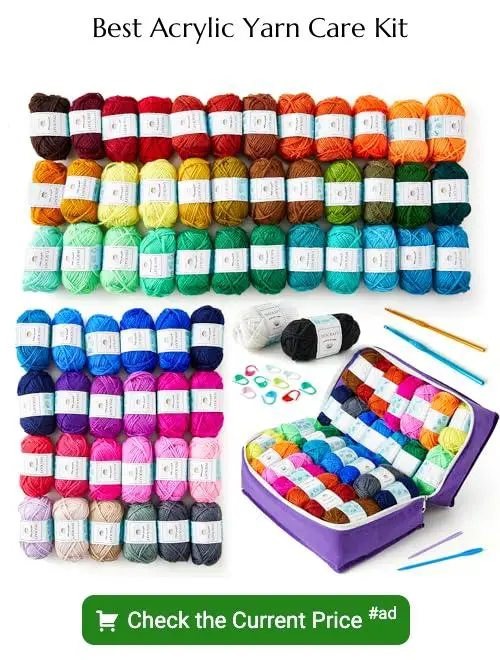Acrylic yarn generally does not shrink due to its synthetic nature.
Acrylic yarn is a popular choice among crafters for its durability and easy maintenance. One common question that arises is, “Does acrylic yarn shrink?” The straightforward answer is no. Unlike natural fibers, acrylic yarn does not shrink when washed.
This synthetic fiber is designed to be machine washable and dryable, making it an ideal choice for items that require frequent cleaning. However, it’s important to note that high heat can cause acrylic yarn to lose its shape or become damaged.
In the following sections, we’ll delve deeper into the properties of acrylic yarn, how to care for it, and tips to prevent potential damage.
Key takeaways:
- Acrylic yarn generally does not shrink when washed.
- Remember: Acrylic yarn is resilient and affordable.
- Acrylic yarn can withstand machine washing.
- Heat can cause acrylic yarn to shrink or become damaged.
- Avoid high heat when washing or drying acrylic yarn.
Understanding Acrylic Yarn
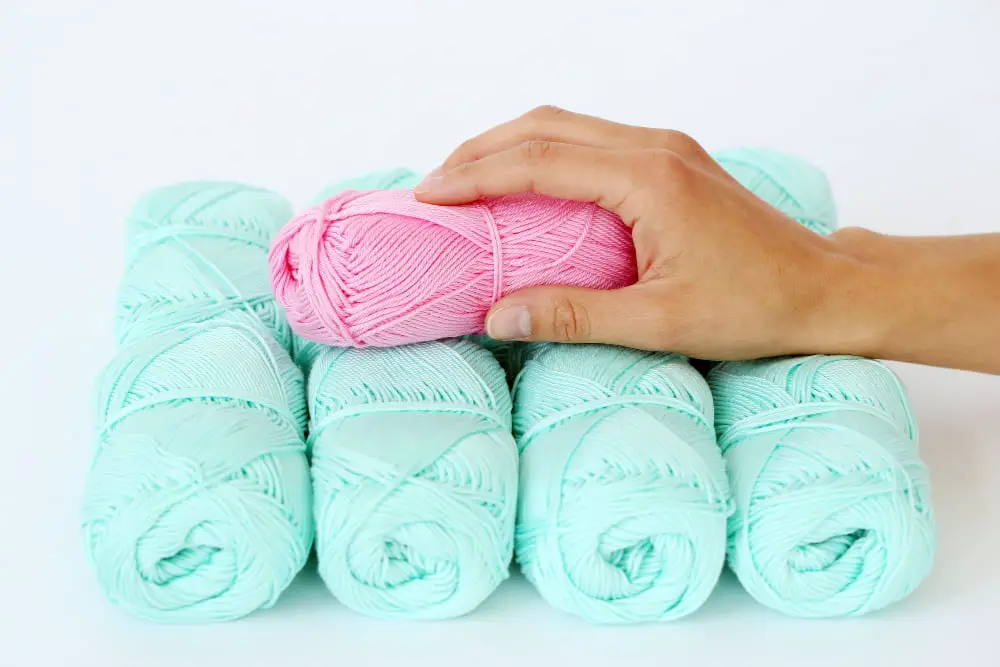
Acrylic yarn is a synthetic material known for its versatility and cost-effectiveness. It’s loved for its durability, lightness, and ease of care. It resists wear, decay, and insect damage. However, it’s not as warm as wool and doesn’t breathe well, which may not be ideal for some projects.
When it comes to laundry, the synthetic nature of this yarn means it can withstand machine washing. But its reaction to heat is what makes it prone to shrinking if not handled correctly.
- Remember: Acrylic yarn is cost-effective and resilient
- Not as warm as wool, and doesn’t breathe well
- Can withstand machine washing
- Prone to shrinking due to reaction to heat
Acrylic Yarn Characteristics

Acrylic yarn is a synthetic alternative to natural fiber yarns, recognized for several distinctive attributes that influence its usage in various crochet and knitting projects.
This type of yarn is widely appreciated for its versatility and durability. It can withstand heavy use and repeated washings without losing its color or shape. This makes it a popular choice for items that see regular use and cleaning, such as children’s toys, blankets, or home décor.
Acrylic yarn is also lightweight which allows for the creation of chunky, voluminous projects without being overly bulky or heavy. This results in comfortable wearables like scarves, hats, and sweaters.
Because it’s man-made, the yarn provides consistent coloring which is ideal for projects requiring a uniform look. Furthermore, it’s available in a vast array of colors and styles, offering a limitless creative palette.
Another key feature of acrylic yarn is its affordability. Compared to natural fibers like wool or cotton, acrylic tends to be significantly cheaper while still yielding high-quality results.
Finally, with regard to care, acrylic yarn generally does not shrink or felt when washed, unlike natural fibers. However, exposure to high temperatures can cause it to become misshapen or even to melt.
Despite the constraints around heat exposure, there are still ways you can manipulate acrylic yarn, such as blocking using steam. Nevertheless, these processes must be conducted with care to avoid damaging the yarn. Always be sure to review care instructions specific to the yarn you are using to ensure its longevity.
How Heat Affects Acrylic Yarn
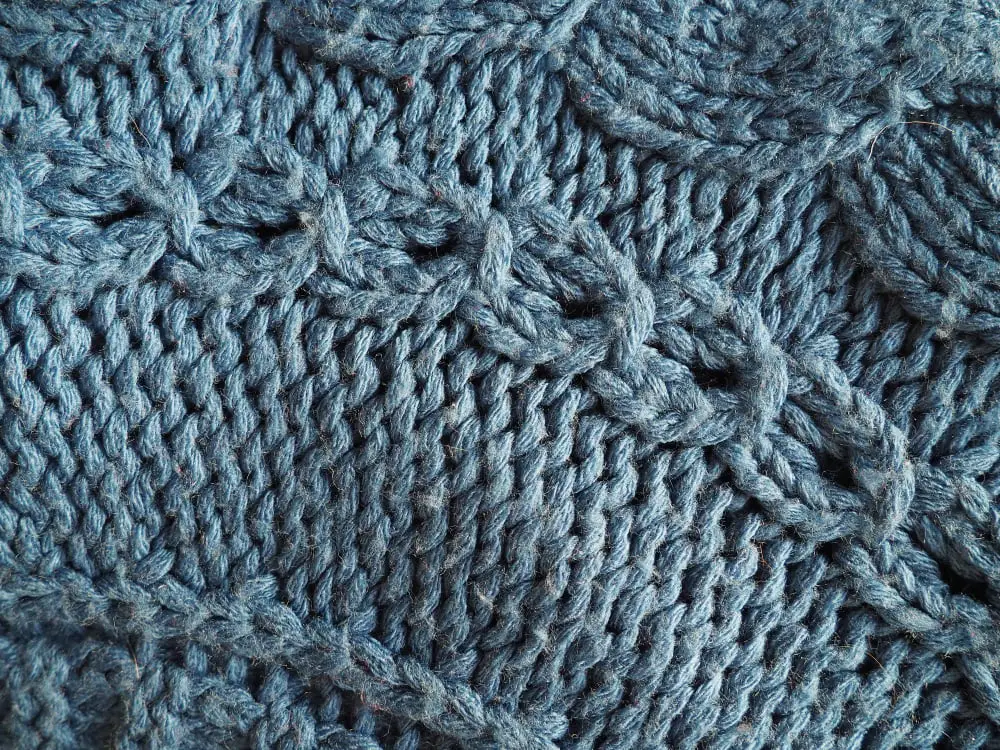
Acrylic yarn is a synthetic material known for its resistance to wear and tear, thus extensively used in various knitting and crochet projects. This durable yarn can withstand daily use, but it is largely vulnerable to heat.
One salient characteristic of acrylic yarn is its low melting point. When it is subjected to excessive heat, the yarn can lose its shape and form, which can be detrimental to finely knitted or crocheted items.
Furthermore, a heated environment often causes this yarn type to shrink. A tumble dryer, hot iron, or even a hot wash might lead acrylic threads to contract. This contraction is often permanent and irreversible.
Bear in mind, excessively heated acrylic can also become stiff, losing its characteristic softness and flexibility. This hardness can be undesirable, particularly for items intended to be soft and comfortable, like scarves or blankets.
However, you can exploit this heat sensitivity to your advantage when blocking acrylic items. Blocking, a method used to shape finished knit or crochet projects, can be applied to acrylic yarn using either steam or a wet method. Keep in mind that you should never let the steam iron directly touch the acrylic yarn as sudden high heat can cause it to melt.
Overall, when handling acrylic yarn, you should always consider its sensitivity to heat to prevent unwanted results like shrinkage, hardening, or even melting.
Shrinkage of Acrylic Yarn in Warm Water
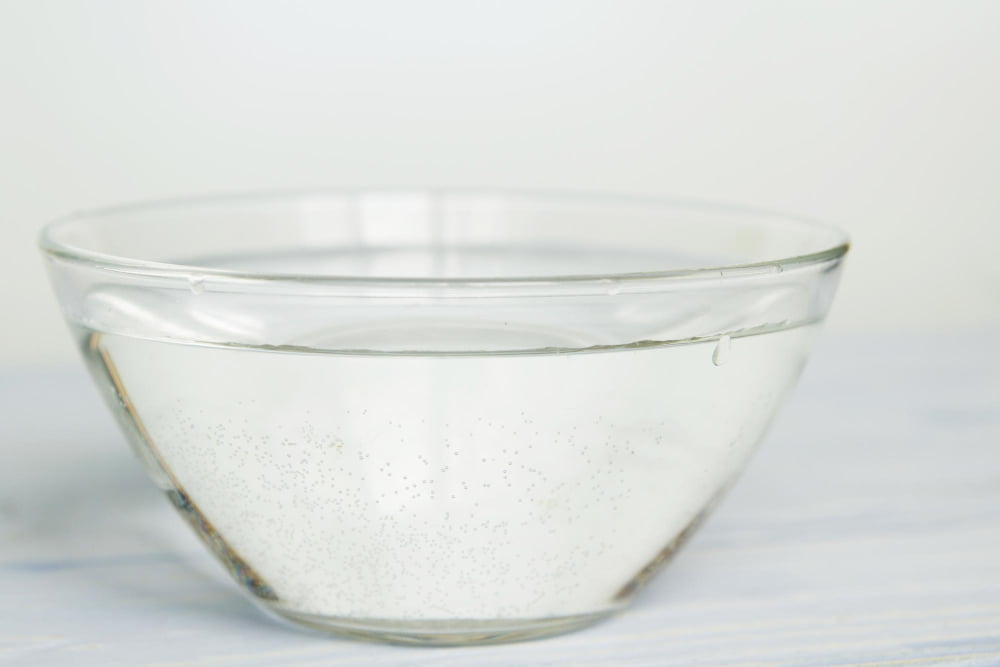
Acrylic yarn is a synthetic fiber crafted to mirror the qualities of natural fibers such as wool and cotton, while offering improved durability and cost-effectiveness. Even though the material has various benefits, when it comes to exposure to warm water, this quality can be a double-edged sword.
Warm water causes the fiber strands in acrylic yarn to relax and, in turn, potentially reduce in size. This trend is similar to other fabrics where warm or hot water effectively shrinks the material.
It’s crucial to note that the degree of shrinkage might vary widely based on several factors:
- The specific brand or quality of the yarn.
- The original state of the yarn (tension, tightness of stitch, etc.)
- The temperature of the water.
- The duration for which the yarn is exposed to the heat.
When washing a finished crochet or knitting project or the yarn itself, it’s recommended to utilize room temperature or cooler water to minimize any risk of shrinkage. If the aim is to intentionally shrink acrylic yarn, soaking it in warm water might suffice, but it may not guarantee significant reduction in size.
Despite its shrinking tendencies in warm water, one of the great aspects of acrylic yarn is that it can usually be stretched back to its original shape with careful handling and the right techniques. A technique called ‘blocking’ often helps restore the shape of an item made of acrylic yarn, this technique involves dampening the item and pinning it to a flat surface until it dries.
Shrinkage of Acrylic Yarn in Cold Water

Acrylic yarn behaves differently in cold water compared to warm or hot water. While hot water can potentially cause this synthetic fiber to shrink, cold water typically doesn’t have the same impact.
Submerging acrylic yarn in cold water helps preserve its original size and shape, thanks to its synthetic nature. Able to withstand low temperatures, this yarn doesn’t react significantly when washed in cold water. Should your project need a wash, it’s safer to opt for a cool or cold cycle.
Agitation can also contribute to shrinkage. Thus, when washing items made from acrylic yarn in cold water, avoid aggressive cycles – a gentle cycle would be most beneficial.
Lastly, when it comes to drying, laying the item flat would ensure no extra shrinkage takes place. It allows the yarn to maintain its form without the added tension that might come from hanging to dry.
Mind you, using fabric softener during the washing process can help keep the yarn soft and flexible, reducing the chances of shrinking even further.
Impact of Washing Machine On Acrylic Yarn
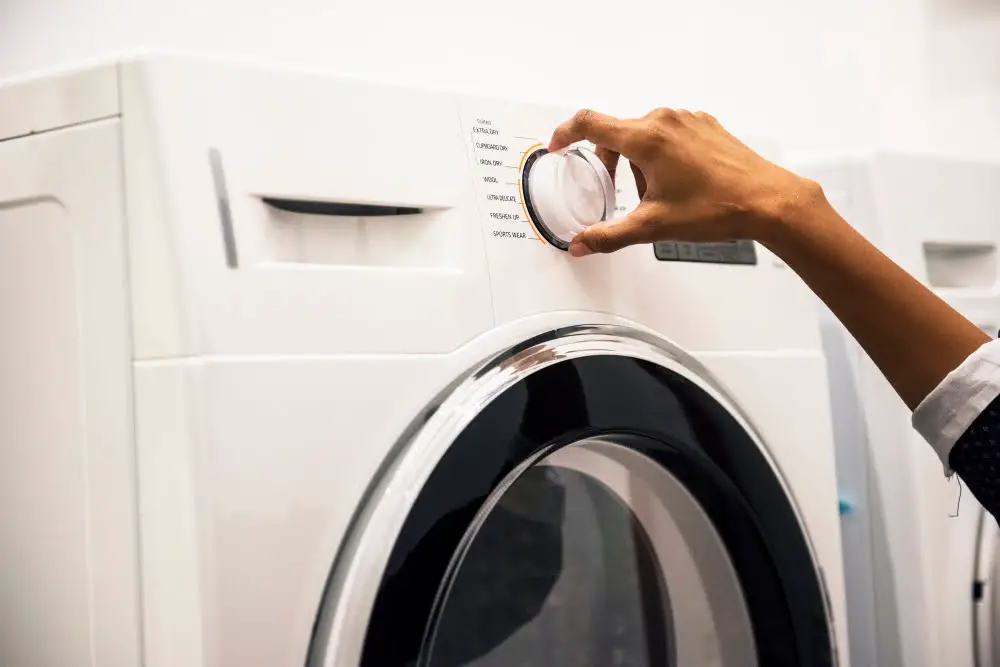
Considering the mechanical agitation and common heat in wash cycles, washing machines may somewhat impact acrylic yarn.
Mild agitation can cause acrylic fibers to loosen or stretch. This can lead to distortions in shape or size in items made from this yarn.
Hot water wash cycles can result in heat-induced shrinkage, while cooler wash cycles minimize potential shrinkage.
It is advisable to place items made from acrylic yarn inside a mesh laundry bag to protect them from excessive agitation.
Using a gentle, detergent-free cleaner lessens the risk of damaging the yarn’s structure.
Remember, it is about working with the qualities of acrylic yarn, rather than against them, to ensure the longevity of your creations.
Effect of Dryer On Acrylic Yarn

Exposing acrylic yarn to high heat in a dryer can cause it to shrink. Contraction happens due to the heat disrupting the synthetic fibers.
Consider these important points:
- The dryer should be set to low heat or air setting when dealing with acrylic yarn.
- Leaving the yarn in the dryer for an extended period can bring about significant shrinkage. Brief drying periods are advised.
- Dryer balls can be employed as they aid in maintaining the size and form of the yarn.
- Lay-flat drying is recommended as an alternative. It prevents shrinkage and helps the yarn maintain its original shape.
- Despite these points, if the goal is deliberate shrinkage, high heat can be utilized intentionally.
Magnitude of Shrinkage in Acrylic Yarn
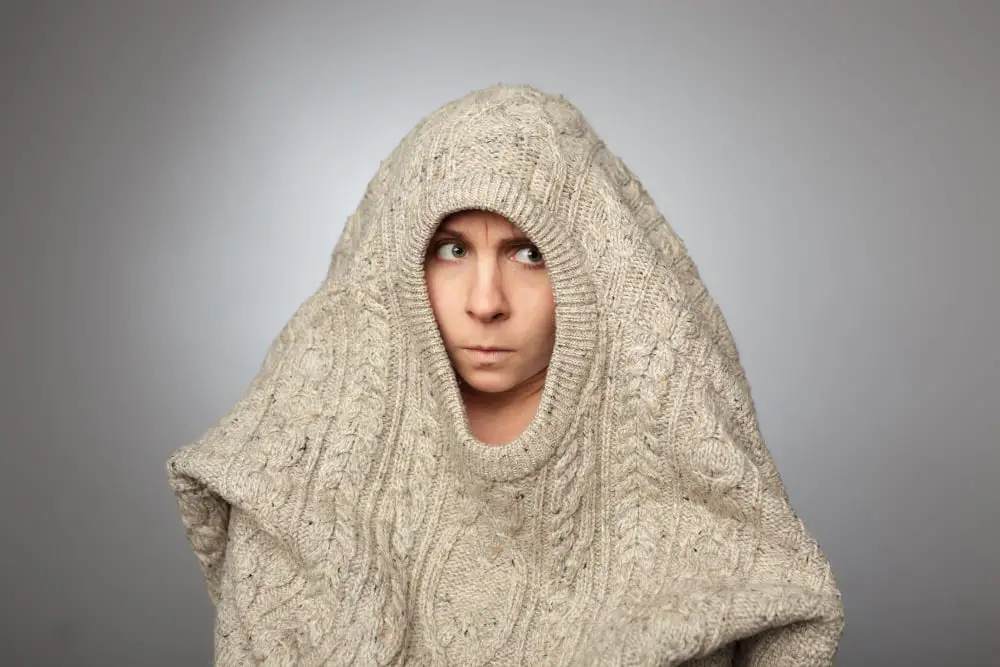
Acrylic yarn is known for being quite resilient and maintains its size under typical conditions. However, exposure to high temperatures, either during washing or drying, can cause some amount of shrinkage.
The degree of contraction heavily depends on the heat exposure. Minimal to moderate shrinkage may occur if washed in warm water. Prolonged exposure to any heat source exacerbates the shrinkage, for instance, if left in a hot dryer for an extended time. However, it’s important to note that compared to natural fibers such as wool or cotton, shrinkage in acrylic yarn is significantly less.
Remember, the best defense against this is to ensure that you carefully follow the recommended care instructions for your particular yarn. It also fares well in cold water, which is less likely to cause contraction.
One should also be wary of going to the other extreme. Attempts to proactively prevent shrinkage by excessively stretching acrylic could result in warping the dimension of the end product.
Preventing Acrylic Yarn From Shrinking

To ensure the most longevity of your crocheted or knitted pieces, it’s crucial to take certain steps:
First, launder acrylic yarn creations carefully. Washing by hand is the safest method. Use cool water and gentle detergent, swish the item around in the water without wringing or rubbing.
Second, choose a slower, cooler drying process. Instead of a dryer, lay the item flat to dry. If a dryer must be used, select a low or no-heat setting.
Third, the way you store acrylic items can also contribute to preventing shrinkage. Avoid hanging crocheted or knitted items as they may stretch. Instead, fold and store them in a cool, dry place.
Lastly, heat is a significant factor in causing acrylic yarn to shrink, so avoid ironing or steam cleaning these items. If you need to remove wrinkles from a finished piece, a gentle, finger pressing method should be sufficient.
Using these guidelines will help preserve the size and shape of your acrylic yarn pieces and prevent unwanted shrinkage.
How to Shrink Acrylic Yarn Purposely
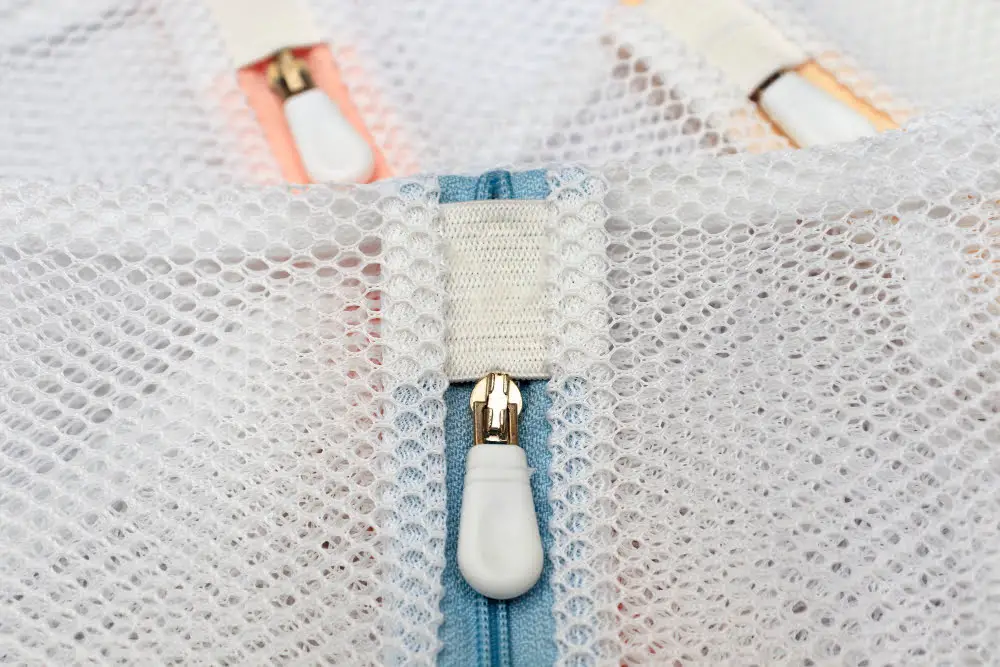
To intentionally shrink acrylic yarn, a certain amount of heat and agitation are required. This process is achievable using common household appliances such as the washing machine and the dryer.
Start by wetting your acrylic yarn or finished item, then place it in a mesh laundry bag for protection.
Next, put the bagged item in the washing machine. The agitation in the machine will aid the shrinking along with the heat. It’s recommended to use the hot water setting, but monitor closely to avoid extreme shrinkage.
Following the wash, take the laundry bag with the item out of the washing machine and put it into the dryer. Use a high heat setting to further promote shrinkage.
Remember, the level of shrinkage depends heavily on the heat applied and the time of exposure. Experiment and observe to get the desired result, being careful not to shrink the yarn or item too much.
How to Restore Shrunken Acrylic Yarn
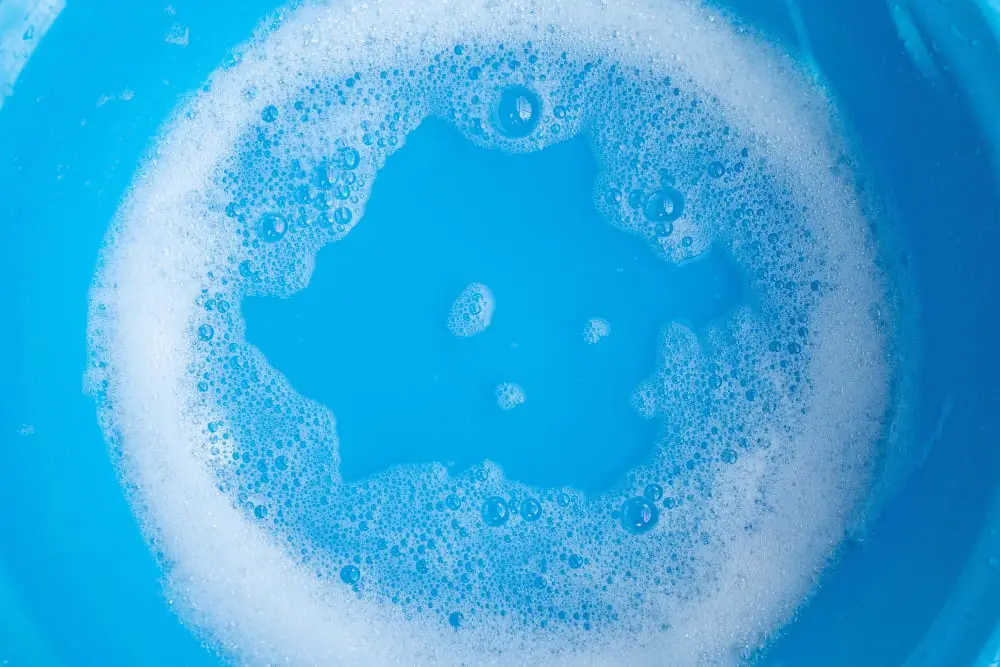
Restoring shrunken acrylic yarn involves a solution of lukewarm water and gentle detergent, slow and deliberate handling, and plenty of patience.
Start by soaking the shrunken piece in the lukewarm water with a mild soap for not more than 15 minutes. The combination of warm water and gentle detergent will help to relax the fibers. Refrain from wringing or agitating the piece as these actions may lead to further shrinkage or cause it to lose its shape.
After soaking, gently squeeze out the excess water without distorting the piece. Then place it flat on a clean, absorbent towel. Roll up the towel along with the yarn piece to absorb as much moisture as it can.
Lastly, reshape the piece on a flat surface and allow it to air dry. You can use rust-proof pins to help it retain its original shape.
Remember to avoid high heat throughout this process, as it can potentially cause further shrinkage. Instead, rely on gentle manipulation and patience to restore the yarn to its original shape and size.
FAQ
Can you put acrylic yarn in the dryer?
Yes, acrylic yarn can be put in the dryer, however, it is recommended to use cold water and low dryer settings to prevent it from stretching.
Does acrylic shrink or stretch?
Acrylic fiber, utilized frequently in yarn crafts, simultaneously possesses the ability to stretch, recover to its original dimensions, and undergo minor shrinkage during maintenance.
Does acrylic crochet shrink?
Acrylic crochet is prone to minor shrinkage, particularly after washing and drying.
Does acrylic yarn have stretch?
Acrylic yarn does not have much stretch, ensuring that your projects maintain their shape over time.
How does washing affect the size and shape of acrylic yarn projects?
Washing acrylic yarn projects typically does not cause a change in size or shape since acrylic is a synthetic material that is resistant to water and high temperatures.
Can steaming be used to shape acrylic yarn creations?
Steaming is not advisable for acrylic yarn creations as it can melt the fibers and potentially ruin the project.
What are the best care practices for acrylic yarn garments to prevent shrinking or stretching?
To prevent acrylic yarn garments from shrinking or stretching, it is best to hand wash them in cold water with mild detergent and lay flat to dry, without wringing or twisting.
